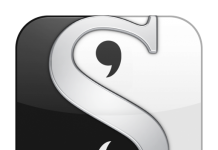 USA Today has another interview with Jeff Bezos (they’re popping up all over given today’s launch of the new Kindles) in which he addresses a couple of points some e-book fans have been asking about for a while.
USA Today has another interview with Jeff Bezos (they’re popping up all over given today’s launch of the new Kindles) in which he addresses a couple of points some e-book fans have been asking about for a while.
Most notably:
Q: Why doesn’t Amazon support the popular "e-pub" standard used by your competitors and many libraries?
A: We are innovating so rapidly that having our own standard allows us to incorporate new things at a very rapid rate. For example: Whispersync (which uses wireless connections to sync your place in a book across devices) and changing font sizes.
Other standards over time may incorporate some of these things. But we’re moving very quickly to improve the state of the art. It’s very helpful not to have to wait for some third-party standard to catch up.
That’s right: changing font sizes is a new thing in the world of e-books. And if they had to support that pesky “third-party standard” then they never could have implemented it.
Bezos also points out, to people who just bought older Kindles after Amazon lowered the prices to move inventory prior to the new devices’ launch, that older Kindles do retain resale value quite well—and to be fair, that is true. After all, not much has really changed about the overall e-ink reading experience, and in a lot of respects the old Kindles still work as well as the new ones. They also can be passed down to friends or relatives.
Beyond that, much of what Bezos says here (about the drawbacks of touchscreens, multimedia, and color; the competition; and the growth of sales) he has already said elsewhere.
































Maybe I should drop Jeff a note to let him know that as long as the Kindle doesn’t support ePub, it won’t even be in the running when I’m ready for an ereader.
Hahaha. I loled at that statement. Either Bezos is a good comedian or an idiot.
They are simply making a commercial risk-assessment decision that there is sufficient of a market out there to be exploited without offering ePub. And that they can maximise their share of that market as far as they can before they surrender to the demands of ePub and other formats. It’s a gamble, and in my opinion we are at such an early stage of this new market that they won’t suffer any negative impact for quite a while yet.
Why not just go the Barnes and Nobel route and simply ignore the standard when it gets in the way? Then license it so everyone else can catch up much later on.
Incidently, Nook just managed hit 50% of Kindles popularity on facebook in the last hour. Although the K3 announcement meant that today was the first day in a long time that Kindle added more fans than Nook.
Could someone explain to me why I should care so much about ePub and who supports it and who doesn’t? I mean I know, standards good, proprietary formats bad, everything should be Open, but I’m really curious why people seem to take it so personally that the Kindle doesn’t support ePub natively.
@Sherri, the quick answer to “who supports it” is – everyone but Amazon. Seriously.
That’s not the question I’m asking; I know who supports ePub, and I also know supporting ePub doesn’t guarantee much in a world of DRM. Apple “supports” ePub, but not in a way that is standard with anybody else. What I want to know is, why should I care?
His answer was clear as soon I read the headline 😉
I would buy a Kindle as soon they support ePub. I live in Europe and the selection for non-english books is too small as everyone supports ePub here. The Kindle may be a huge success in the US, but for the most other countries is not worth mentioning. I prefer my Sony Reader with which I can buy English books from their store and non-English books from local online stores.
Sherri, because epub works on multiple devices from multiple vendors. All you have to do to swap devices is to re-authenticate essentially (iBooks aside). It also makes ebook production more seamless as the publishers then only have to focus on one format, and enable them to give a more consistent experience across devices. Format conversion can result in incompatibilities and problems viewing the content, and they have to use different tools for editing Kindle and epub.
The innovation argument Bezos makes also goes both ways – as long as they have their own format they miss out on technological innovations in epub, and they also can’t influence epub and help it get better. If Amazon supported epub, they could even sell more books to people with Nooks, Sony Readers etc. In a way this reminds me of the HD DVD vs Blu-ray war, where you had two opposing formats and neither of the sides seemed to understand the advantages of having just one.
But the problem with this seamless experience is DRM, and I don’t see how that’s going to go away. Nobody other than consumers wants DRM to go away; rightly or wrongly, retailers and publishers want it to prevent piracy. For Amazon to sell a book for the Sony Reader, they would have to pay a license to Adobe for DRM. For the Nook, it’s not clear to me what they would have to do, because as I understand it, the Nook has Adobe DRM but with some changes so it’s not compatible with Sony. In the free book world of Project Gutenberg et al, Kindle formats are there alongside ePub.
Standards are useful things, but they aren’t necessarily the best or fastest path to innovation. I’m not saying Bezos’ statement isn’t disingenuous, just observing from a long history in the tech world.
agreed re. non-english books. but i live in the u.s., so there’s no way i’m buying a sony just yet. i’m (probably the only customer) pressuring amazon to work something out with european publishers. the reason why, is that there is *no way* for me to see on an e-bookseller’s website whether a french or german e-book may be purchased by people in the u.s. without *actually attempting to buy it for real*. so if it’s not available, no big deal; if it is, i just bought it and have nothing to read it on. and i have no way of getting an overview of available titles, or whether there’s a french-french or german-german dictionary available to swap in as the default. (i need to *understand* the words — i don’t need to know the words in english.)
so e-booksellers need to make that information immediately apparent. in fact, there are entire online booksellers that don’t sell outside the EU and don’t make that clear on their homepage. (um. it’s the internet, guys.) i’m a little surprised that sony doesn’t seem to care. they could sell devices to probably every serious foreign language student and scholar in north america, on the strength of instant gratification and saved markup and shipping charges alone, if we could be sure that the license extends to us. once i am satisfied that enough of the material i’m interested in would be available to me, i’ll get more serious about agitating for amazon’s device to recognize the format — or for publishers to also supply a kindle-compatible edition for download. i frankly don’t really care which. (although like many, i do care about persistence, nobody gets to have that, yet.)
aside: geographic limitations are stupid. if – for example – australian publishers want to make money, they should find more australians to write more good books and sell them worldwide, rather than excluding u.s. publications from australia so they can publish their own editions of the latest by grisham or king or patterson. the entire english-speaking world is far bigger than australia. on the other hand, there are a significant number of germans within the german-speaking countries who don’t read at all. however, german ex-pats tend to be *hungry* for reading material in their own language, even if they never read much at home. i know i keep saying this; but publishers are stupid.
Innovating rapidly, Jeff Bezos? Don’t you mean, holding on to the past? Preventing designers from doing much, if anything, with formatting? How about adding more than one font? (And no, I don’t think the monospace font counts as an additional font. Besides which, you can’t use the CSS attribute to envoke it, you have to use a special Kindle-defined tag for it. How is that forward-thinking?) How about allowing the right margin to be specified? How about allowing normal, predictable results for other formatting attributes like line spacing and indents? Bottom line, ePub allows much richer and more beautiful formatting, which benefits the reader. Kindle formatting is extremely limted (backwards-thinking IMO), so stop saying you’re innovating. The only thing you’re innovating is the delivery platform. Yes, delivery “experience” empowers reading (and, ahem, commerce), but it does not affect the reading experience. By preventing innovation with the layout, which is the element that most directly affects the reading experience, you’re holding eBooks back, not innovating.
Sony’s epub files work on the Nook just fine. What doesn’t work is Nook ebooks on the Sony, because Sony’s using an old version Adobe’s DRM engine. They just need to update it and it should work.
My wife has the nook and I have a Sony Pocket Reader — I’m able to, through the B&N website, download her nook books and put them on my Sony and, with Adobe Digital Editions, load my Sony eBookstore books on her nook. We even keep the same DRM, time-limited library books on both devices simultaneously… all thanks to ePub. If Amazon went ePub, I’d certainly ditch my Sony Reader for the new Kindle.
Sherri,
ePub supports DRM just as well as AZW Kindle books do. A major reason to choose an ePub reader over a Kindle is access at public libraries. Many public libraries offer books for checkout in ePub format. They use the DRM features of ePub to expire the books on the reader after a set period of time.